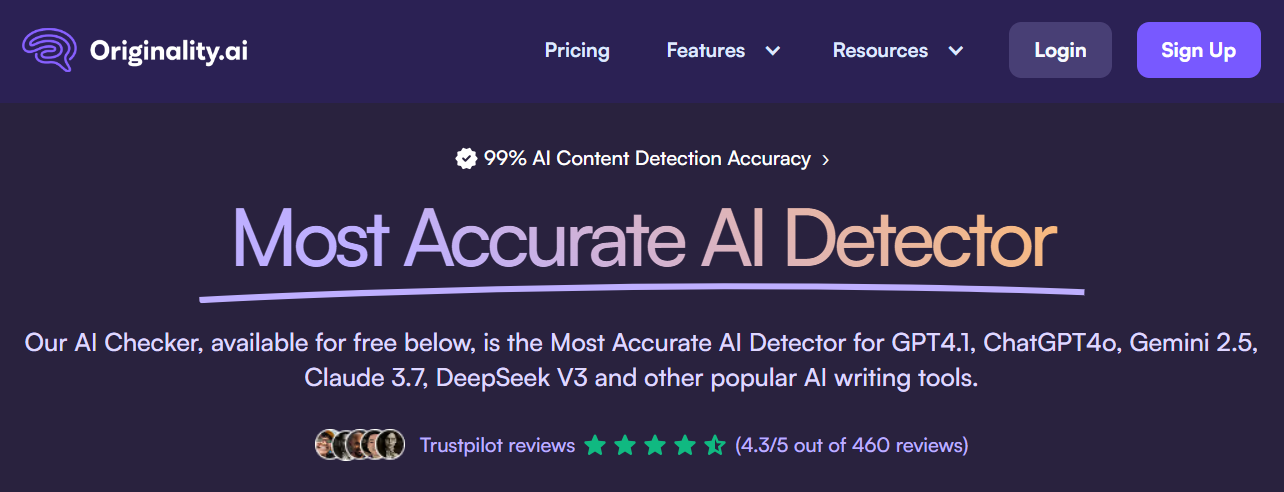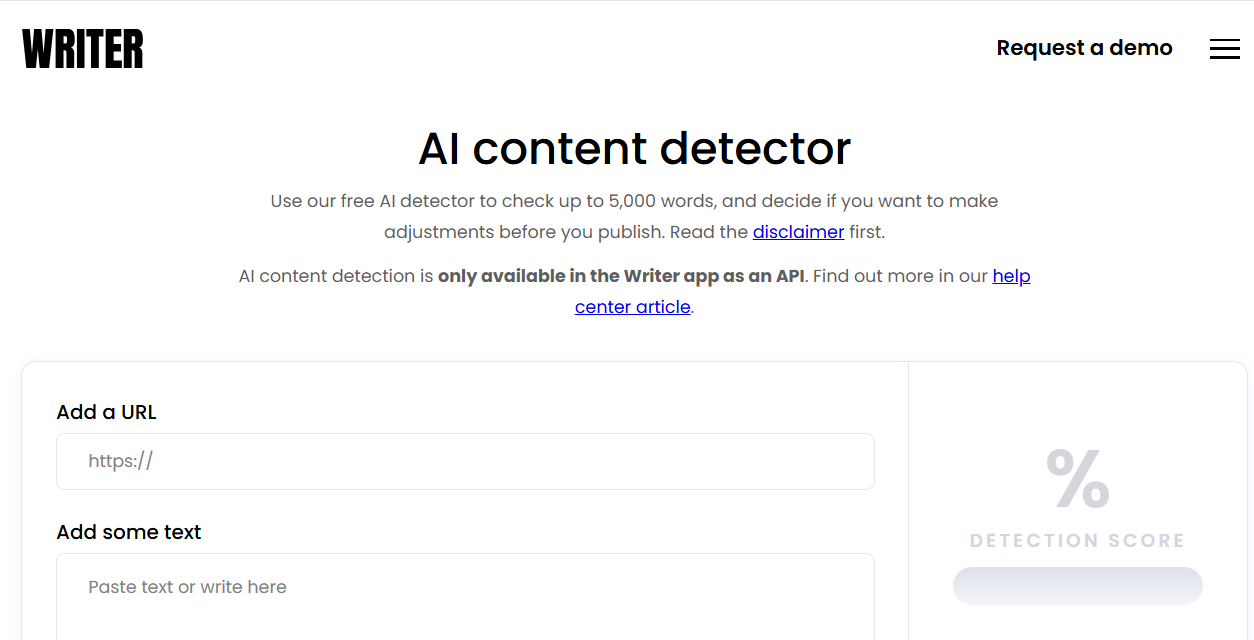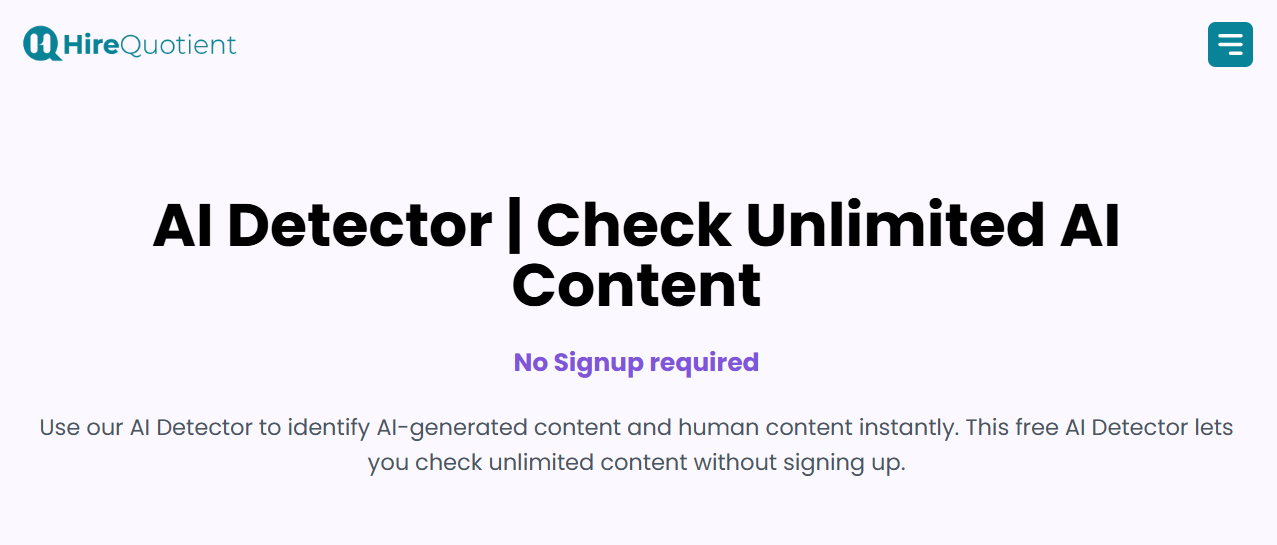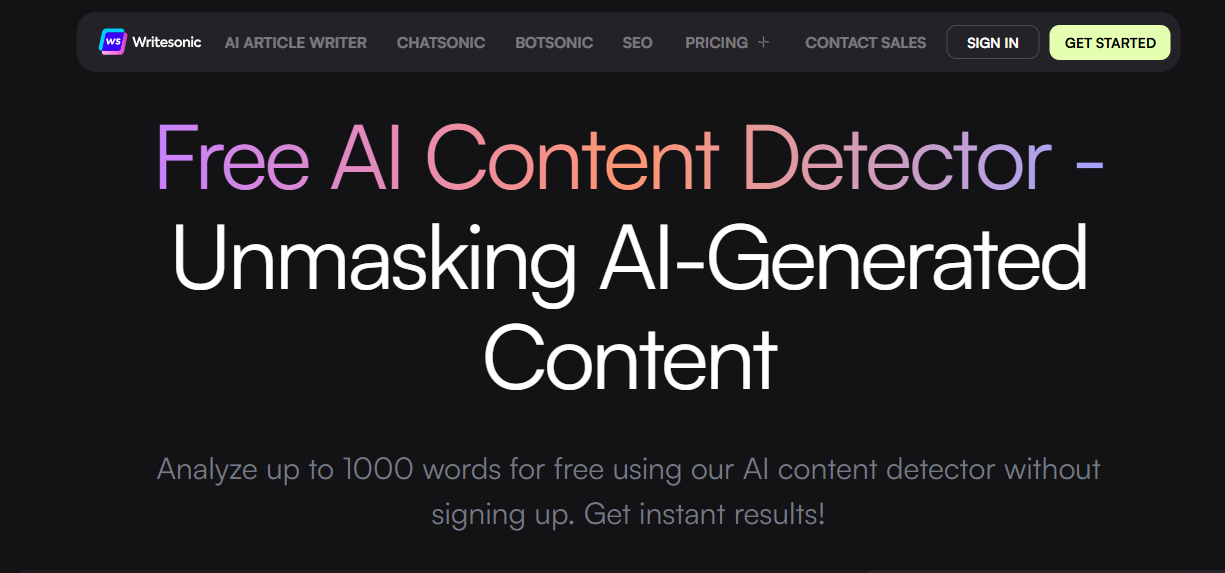In 2025, the explosion of AI-assisted writing makes content authenticity more critical than ever. Bloggers face competition from machine-generated posts and spun articles. Ensuring originality affects SEO rankings and reader trust.

Bloggers can quickly identify non-original passages before publishing by leveraging an AI content detector or an advanced AI writing detection tool. Fortunately, a smart AI solution exists to help writers navigate this challenge. The trick is to choose those that fit your blogging needs best.
In this post, we’ll explore the top AI content detectors of 2025, comparing features, pricing, and integration options. Whether you’re a solo blogger or part of an agency, you’ll learn which tools fit your workflow and budget.
The Changing Landscape of Content Authenticity
Over the past few years, content authenticity has undergone a dramatic transformation:
Bloggers relied on basic plagiarism checkers to catch copied text. These tools compared submissions against existing web content, flagging exact matches. However, generative AI technologies advanced, they began producing paraphrased or original-sounding text evading traditional checks. By 2025, simple string matching is no longer sufficient to ensure true originality.
Modern content creation demands more sophisticated methods.
The core challenge is how to detect AI-written content within longer passages. While a conventional plagiarism checker AI can identify duplicate text, it struggles to flag subtle markers of machine-assisted writing. Style-based analysis, contextual pattern recognition, and machine-learning classifiers now work in tandem to spot AI fingerprints. These techniques examine sentence rhythm, vocabulary distribution, and structural anomalies that hint at algorithmic generation.
So, bloggers must address the tools that combine multiple detection strategies. Advanced platforms merge fingerprint databases of known AI outputs with real-time style analysis, offering better defense against inauthentic content. As the arms race between generative models and detectors intensifies, staying updated with cutting-edge solutions is essential for maintaining trust and SEO rankings.
Key Criteria for Evaluating a Content Detector
One should consider several important factors when selecting a tool to detect AI-generated text. These criteria ensure that the chosen solution identifies machine-assisted writing accurately and fits within your workflow, budget, and technical requirements.
-
Accuracy and False-Positive Rate: measures how reliably the detector flags AI-generated passages versus human-written content. (A low false-positive rate prevents wasted time reviewing perfectly original text.)
-
Speed and Throughput: determines how quickly the tool processes a single document or batch of files. (Faster scan times are crucial for tight publishing schedules or high-volume blogging.)
-
Integration and Workflow: assesses available plugins, browser extensions, or API access for seamless incorporation into your CMS or writing environment. (Direct integration reduces friction, allowing checks before hitting “Publish.”)
-
Pricing Model: considers free tiers, pay-per-use, or subscription plans. (Think about cost per word or document and whether it scales with your content volume.)
-
Additional Features: like reporting dashboards, team collaboration tools, and multilingual support if you write in multiple languages.
Evaluating each of these criteria helps bloggers choose a detector that identifies AI-written content effectively and aligns with their operational needs.
Overview of Top Tools in 2025
This exact lineup may shift quickly, but as of 2025, these tools stand out among bloggers.
Originality.ai

Originality.ai is a leading AI content detector with 99% accuracy for GPT-4 and ChatGPT models. It combines AI detection, plagiarism checking, readability, and fact-checking into one platform. Supports 15 languages, offers sentence-level highlighting, team management, and API access. Plans start at $14.95/month or $30 pay-as-you-go.
QuillBot AI Content Detector

Launched in July 2024, QuillBot’s free detector scans up to 1,200 words without signup. It supports English, Spanish, German, and French, and reports a percentage score for AI-generated likelihood. Independent tests show ~80% accuracy but can yield false positives on human text. Ideal for quick, lightweight checks.
Writer.com AI Content Detector

Writer.com’s free detector checks between 60 and 5,000 words per submission, returning a clear percentage likelihood of AI generation. Users can paste text or submit URLs. Enterprise plans offer API access for automated checks (up to 500,000 words/month). Integration with Google Docs, Word, and Chrome extensions simplifies workflow, though detection accuracy can be inconsistent.
HireQuotient AI Detector

HireQuotient offers a completely free, unlimited AI detector with no signup required. It analyzes up to 25,000 characters at once, supporting over 50 languages. The tool provides detailed percentage reports, highlights suspected AI passages, and includes a built-in editor for on-the-fly revisions. Available as a web tool, Telegram bot, and Chrome extension.
Writesonic AI Content Detector

Writesonic’s AI Content Detector is free and analyzes up to 1,000 words per check, distinguishing content from ChatGPT, Bard, GPT-3/4, and more. It supports multiple languages and provides a human-versus-AI score. The interface is straightforward but lacks detailed reporting. A paid plan ($18/month) offers higher limits and additional AI tools.
How to Integrate a Detector into Your Workflow
1. Choose Based on Volume and Budget
Solo Blogger, Occasional Posts:
-
Opt for tools with free tiers or low monthly fees (e.g., PureText Guardian’s $15 flat plan or VeracityScan’s free 2,000-word check).
-
Ensure basic accuracy and speed meet your needs without overspending.
Small Team or Agency:
-
Allocate budget for mid-tier options (WriteShield Detector’s $20/month or VeracityScan’s pay-per-use).
-
Prioritize tools with multi-user licenses and collaboration dashboards to streamline workflows.
Large Enterprise:
-
Invest in enterprise-grade solutions (AuthentiCheck Pro’s $200/month plus private-cloud deployment).
-
Focus on advanced reporting, audit trails, and multilingual support.
2. Install and Test on a Sample Draft
-
Gather test content: Select a known human-written paragraph (e.g., your blog post) and a short AI-generated snippet.
-
Run comparative checks: Submit both samples to your chosen detector to gauge false-positive and false-negative rates. Note how the tool flags each example, and record any borderline cases.
-
Adjust settings: Calibrate sensitivity or “confidence thresholds” if available, ensuring the tool aligns with your risk tolerance.
3. Set Up Alerts or Pre-Publish Checks
Automatic Scans on Save or Publish:
-
Enable a plugin or CMS integration that runs checks each time you save a draft.
-
Configure your editor or pipeline for API-based tools to call the detector before finalizing content.
Define Confidence Thresholds:
-
Decide on a percentage score (e.g., anything above 50–60%) that triggers manual review.
-
Document this threshold in your style guide to maintain consistency across authors.
4. Define Your Remediation Process
Rewriting Flagged Content:
-
Use strategies like breaking up lengthy sentences, varying vocabulary, and injecting personal anecdotes or research insights.
-
If the detector provides rewrite suggestions, incorporate those as a starting point.
Second-Editor Review:
-
For high-stakes projects (sponsored posts, client work), route any borderline cases to another editor or proofreader.
-
Keep a log of revisions and notes explaining why changes happened, establishing a clear audit trail.
Practical Tips and Best Practices
Don’t Rely Solely on One Tool
Even the most advanced detectors have blind spots. Combining two complementary tools—one focused on style analysis and another on fingerprint matching—reduces the chance of missing AI-generated passages.
Periodically cross-check a sample draft in both tools to compare results. If one flags a passage and the other does not, treat it as a prompt for closer, manual inspection.
Keep Your Tools Updated
Generative AI models evolve rapidly, and detectors must retrain on those latest patterns. Enable automatic updates or set quarterly reminders to check for new versions.
When a detector releases a “major” update or improved fingerprint database, rerun past samples to gauge improvements in accuracy. This practice helps you recognize any persistent false-positive trends.
Balance Automation with Human Judgment
Automated detectors can misclassify nuanced, technical, or creative writing as “AI-like.” Always read flagged sections yourself before rewriting or discarding content.
Establish a brief checkpoint: when the detector flags text above your chosen confidence threshold, pause to evaluate whether the wording sounds inauthentic or reflects a complex writing style.
Maintain an “Originality Log”
Document your research process: note sources, interview excerpts, and any unique insights you weave into a post. When a detector raises a flag, this log proves that certain passages stem from legitimate work rather than AI.
Use a simple spreadsheet or note-taking tool to record dates, source URLs, and direct quotes you referenced. A clear trail can be invaluable if an editor or client questions content authenticity.
Train Team Members on Detection Workflows
If you work with multiple writers or editors, standardize the process: designate who runs the initial scan, who reviews flagged passages, and who applies rewrites.
Host a brief training session whenever you switch to a new detector, ensuring everyone understands its reporting interface, confidence scores, and typical false-positive patterns.
Iterate on Your Thresholds Over Time
As you gain confidence in a detector’s reliability, adjust your “manual review” threshold. For example, if you start at a 50% confidence cutoff, you may later lower it to 40% if you notice consistent under-flagging.
Document these threshold changes in your editorial guidelines so team members apply the same standards.
Stay Informed About Emerging Trends
Join blogging or content-creation forums to learn what new AI-writing detection tools are gaining traction. Early adopters often share user experiences, accuracy benchmarks, and integration tips.
Subscribe to industry newsletters that announce generative AI and detection research updates—this helps you anticipate when to reevaluate your current toolkit.
In a Word
In 2025’s landscape, an AI content detector is no longer optional—it’s essential for preserving trust, SEO, and brand integrity. Start by testing a free or low-cost tool, then scale up as your needs grow. Combining automated checks with judicious human reviews will safeguard your content’s authenticity and reinforce credibility with readers and clients.